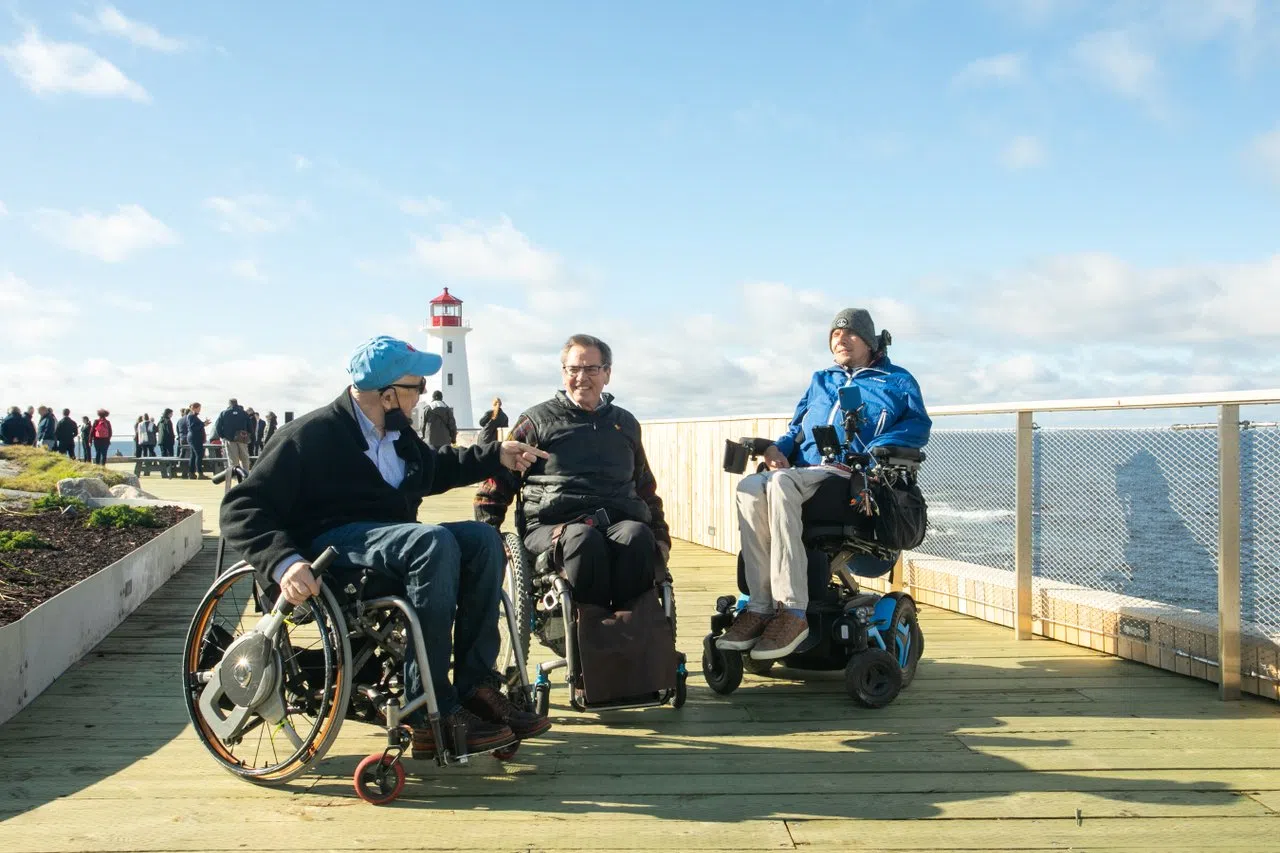
Accessibility upgrades at Peggy’s Cove include new walkways and viewing platforms designed to improve mobility access. (Photo: Develop Nova Scotia)
Nova Scotia has released its updated accessibility plan, outlining the government’s next steps toward becoming a fully accessible province by 2030.
The 2025–2028 Government Accessibility Plan is the third such roadmap since the province passed the Accessibility Act in 2017. It builds on earlier work from the 2018–2021 and 2022–2025 plans, and sets new priorities to prevent and remove barriers for persons with disabilities across public life.
Previous iterations of the plan led to accessibility upgrades at Peggy’s Cove, including improved walkways and facilities to better accommodate visitors with mobility challenges.
Justice Minister Becky Druhan, whose department oversees the accessibility file, says the updated plan continues the province’s commitment to accessibility by design.
“This plan is really about how we embed accessibility into the way we build and improve Nova Scotia,” Druhan said. “We’re excited that we’re now implementing the first of our accessibility standards — the built environment standard — and we’ll continue work on others over the next three years.”
The built environment standard focuses on making physical spaces accessible to all individuals. Other areas of focus include employment, education, transportation, public services, and communication. The plan also sets out commitments to improve government accountability and track progress through interdepartmental coordination.
According to Druhan, accessibility is not handled as a standalone budget line. Instead, it’s incorporated across departments, making it a shared responsibility. She emphasized that investments in accessibility—such as grants for municipal washroom upgrades or accessible beach walkways—are already improving community infrastructure.
“Accessibility isn’t about seeing a financial return. It’s about making sure people can access services and communities for their health, wellness, and sense of belonging,” said Druhan. “Those are outcomes that matter, even if they’re not tied to dollars.”
The plan was informed by public consultation, including feedback from people with disabilities and advocacy groups across the province. It aims to reflect diverse experiences through an intersectional lens and prioritizes the use of plain language in communication.
Druhan says the government remains open to ongoing feedback as implementation continues. The Accessibility Directorate, guided by an advisory board made up of Nova Scotians, welcomes public input and helps inform future updates.
The province is encouraging residents, organizations, and municipalities to stay engaged and take part in the broader goal of creating an inclusive, barrier-free Nova Scotia.
For more information or to view the full plan, visit: https://novascotia.ca/accessibility/plan/government-accessibility-plan.pdf









